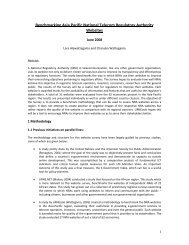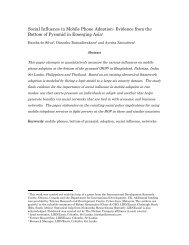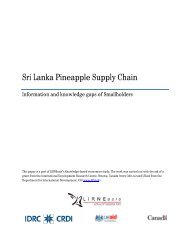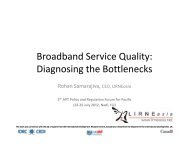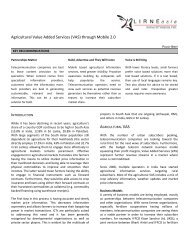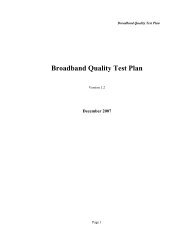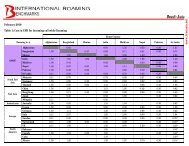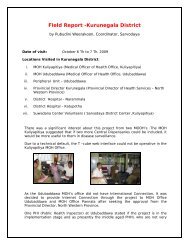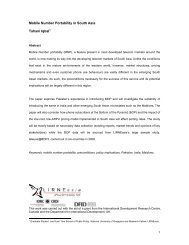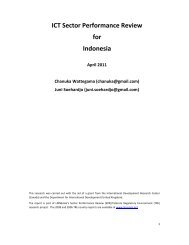Teleuse@BOP3: A Qualitative Study - LIRNEasia
Teleuse@BOP3: A Qualitative Study - LIRNEasia
Teleuse@BOP3: A Qualitative Study - LIRNEasia
You also want an ePaper? Increase the reach of your titles
YUMPU automatically turns print PDFs into web optimized ePapers that Google loves.
Introduction<br />
Why Is This <strong>Study</strong> Important?<br />
Telecom and the Bottom of the Pyramid<br />
Rural and low income urban markets are of considerable interest to multinational telecom players today than they<br />
have ever been in the past. It is widely evident that urban mobile penetration rates in several parts of Asia are<br />
reaching saturation and mobile development will now take place in the rural areas. Not only the rural consumers but<br />
also the low income consumers residing in urban areas in these countries will become the next telecom adopters.<br />
The fact that many industry experts believe that the next billion telecom subscribers (particularly mobile) will come<br />
from the Bottom of the Pyramid (BOP) only hints at the need to study such respondents in more details to<br />
understand how to serve this segment better. The urban BOP consumers have substantial needs for information due<br />
to the challenges posed by income and infrastructure. In rural BOP consumers both entertainment and information<br />
are substantial needs since remoteness aggravates these lacks by posing challenges to business development as<br />
well as general needs for communication. In the course of this research we observe that while the types of<br />
information needs are similar in both urban and rural users, the volume of information that is being sought are higher<br />
in rural areas than in urban, except for Philippines where they emerged as equal. This is due to the difficulty in<br />
accessing information infrastructures like institutional resources which are available more easily to the urban<br />
residents than rural ones.<br />
The Mobile Development Report (2006) produced by CKS also highlights the role of telecom as a source of<br />
enhanced household income. In addition, telecom adoption at the BOP also transforms their personal identity by<br />
increasing their accessibility and hence, their credibility. Telecom adoption is also seen to impact their social and<br />
professional network coordination by strengthening family ties and increasing business coordination overcoming<br />
substantial challenges posed by their location and context.<br />
Pyramidal versus Normal Distribution<br />
The BOP has largely been understood as the last step in a society that is represented through the pyramidal<br />
approach popularized by C.K. Prahalad and S. Hart (2002). Their classification of society with respect to income<br />
levels and population size is perhaps the most widely used and understood schema for all involved in understanding<br />
consumer segmentation for various reasons and interests. They indicate that according to Purchasing Power Parity<br />
(PPP), households around the world organize themselves roughly as a pyramid. While Prahalad and Hart have<br />
received much deserved appreciation for their contribution to global business and developmental conversations by<br />
calling people’s attention to the ‘Bottom of the Pyramid’ (BOP), we also know from the laws governing large numbers<br />
that large populations do not tend to cluster as pyramids, but rather as normal / Gaussian distributions represented<br />
by a bell curve. With Socio-Economic Classes A1 and E2 constituting the tails of the bell. Prahalad and Hart’s<br />
7




